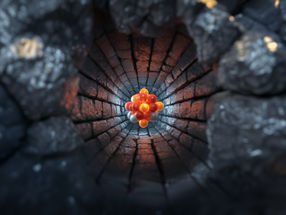Stem Cell Innovations AND TWente University to evaluate bone forming capacity of Pluricells
Stem Cell Innovations, Inc. has initiated a collaboration with the University of Twente (the Netherlands) to explore the bone forming properties of PluriCells(TM). Under the material transfer agreement, the University of Twente will get access to Stem Cell Innovations' (SCI) proprietary human pluripotent stem cell technology and know-how. In return SCI will receive a nonexclusive license to intellectual property generated with the PluriCells.
"The team of professor van Blitterswijk is one of the world's leading academic groups in the study of stem cell derived bone and cartilage formation. This former IsoTis in-house orthobiology research group has developed a comprehensive set of robust in vitro and in vivo models in which the PluriCells will be tested", said Stem Cell Innovations CEO Dr. James Kelly. "SCI is impressed that their science is very application driven, with van Blitterswijk as founder of several biotech companies, including IsoTis, where he was CEO".
"We are very pleased to work with the PluriCells provided by Stem Cell Innovations", said Prof. Dr. Clemens van Blitterswijk. "SCI has developed a unique cell culture system that makes culturing of human pluripotent stem cells much more straightforward. I expect that our stem cell research team, headed by dr. Jan de Boer, will extrapolate recent results with murine stem cells to human bone tissue engineering using PluriCells".
Stem Cell Innovations recently disclosed it has produced multiple lines of human pluripotent stem cells. These PluriCell lines can be efficiently cultured in tissue culture plates without the use of feeder layers and can be efficiently differentiated into multiple cell-types, having the potential to aid in drug discovery and development.
PluriCells(TM) are a type of pluripotent stem cells isolated from fetal tissue that have the ability to become all cell types of the body. Because they are developed from fetal germ cells, not viable embryos, they are eligible to be used in any NIH funded laboratory. Stem cells derived from fetal germ cells were explicitly excluded from the Presidential ban by the Department of Health and Human Services guidance document of March 19, 2002, that laid out what type of stem cells could and could not be used in Federally funded research (for the actual document see link below.
Most read news
Topics
Organizations
Related link
Other news from the department science

Get the life science industry in your inbox
By submitting this form you agree that LUMITOS AG will send you the newsletter(s) selected above by email. Your data will not be passed on to third parties. Your data will be stored and processed in accordance with our data protection regulations. LUMITOS may contact you by email for the purpose of advertising or market and opinion surveys. You can revoke your consent at any time without giving reasons to LUMITOS AG, Ernst-Augustin-Str. 2, 12489 Berlin, Germany or by e-mail at revoke@lumitos.com with effect for the future. In addition, each email contains a link to unsubscribe from the corresponding newsletter.




















































